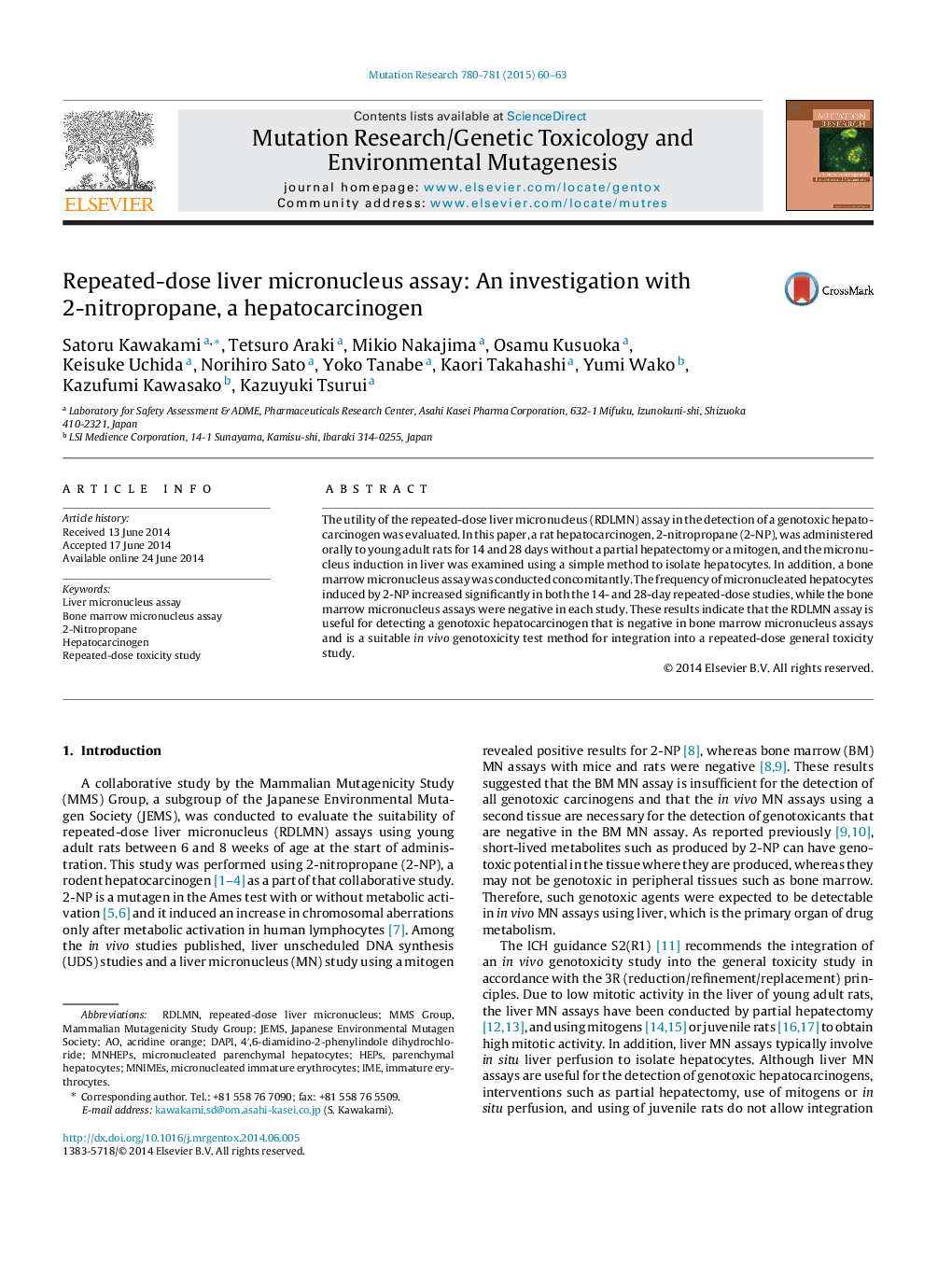| Article ID | Journal | Published Year | Pages | File Type |
|---|---|---|---|---|
| 8456413 | Mutation Research/Genetic Toxicology and Environmental Mutagenesis | 2015 | 4 Pages |
Abstract
The utility of the repeated-dose liver micronucleus (RDLMN) assay in the detection of a genotoxic hepatocarcinogen was evaluated. In this paper, a rat hepatocarcinogen, 2-nitropropane (2-NP), was administered orally to young adult rats for 14 and 28 days without a partial hepatectomy or a mitogen, and the micronucleus induction in liver was examined using a simple method to isolate hepatocytes. In addition, a bone marrow micronucleus assay was conducted concomitantly. The frequency of micronucleated hepatocytes induced by 2-NP increased significantly in both the 14- and 28-day repeated-dose studies, while the bone marrow micronucleus assays were negative in each study. These results indicate that the RDLMN assay is useful for detecting a genotoxic hepatocarcinogen that is negative in bone marrow micronucleus assays and is a suitable in vivo genotoxicity test method for integration into a repeated-dose general toxicity study.
Keywords
Related Topics
Life Sciences
Biochemistry, Genetics and Molecular Biology
Cancer Research
Authors
Satoru Kawakami, Tetsuro Araki, Mikio Nakajima, Osamu Kusuoka, Keisuke Uchida, Norihiro Sato, Yoko Tanabe, Kaori Takahashi, Yumi Wako, Kazufumi Kawasako, Kazuyuki Tsurui,
